
Russian Flags up to 1917
Knowing a bit about the Imperial system helps to understand the later White flags a bit better.
Ceremonial Flags
Most regiments in the Imperial army had been awarded a ceremonial flag for some action or other, or to mark some special event. These flags were of huge sentimental value to the units, or at least their officers, and they took extreme measures to ensure that they did not fall not fall into enemy hands. The days of marching into battle with the regimental colour at the front of the unit were over and they were not placed deliberately in harm's way – in WWI often being many kilometres to the rear.
The older ones were particularly frail, and many were literally falling apart. Even when at the front of a unit for a parade they were often kept in their waterproof covering to slow this process.
There were some exceptions, but most followed one of these two basic patterns.
Nikolais
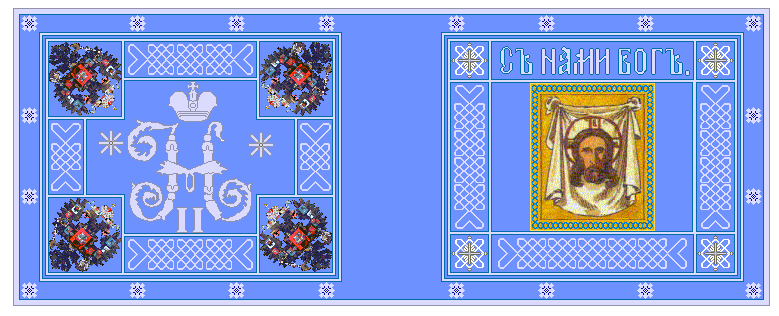
The newer models were often called a "Nikolai" if it had been awarded since 1894 because the bore the monogram of Tsar Nikolai II. On the back they bore the face of the saviour, unless they were for a non-Christian unit and so bore the Imperial Eagle.
There were some very similar slightly older models from the previous reign, which have Aleksandr III's monogram and a patron saint or saints rather than Christ.
Georgievskis
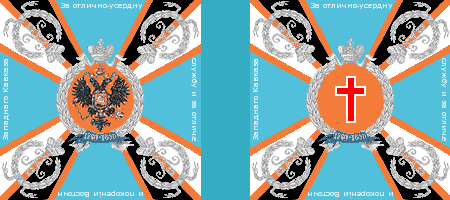
Flags from prior to that are sometimes called "Georgievskis" because they were in the colours of St George (white-orange-black) on a unit coloured background. The monograms and exact style depended on which Tsar had awarded them, but they followed the same general pattern as shown above.
Other Styles
A few outfits, especially things like schools, used different systems. Many were based on white-orange-black tricolours.
The Navy used a blue and white St Andrews cross, like a reversed flag of Scotland.
HQ Flags
Instead of their ceremonial banner, units used an HQ flag (or "camp colour") to mark the physical presence of the staff of the unit. There was a scheme of colours and styles which identified the type of unit, usually with a cipher or number inside.
Divisional Command
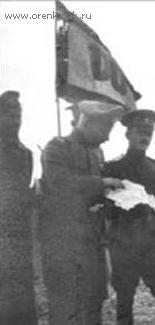
Division flags were a rectangle of 150 cm by 100 cm, with a 20 cm border. The field and border colour indicated the nature of the division.
To the left is the flag of the 10th Cavalry Division in WWI. It is a light orange field with scarlet border and a "10" in black.
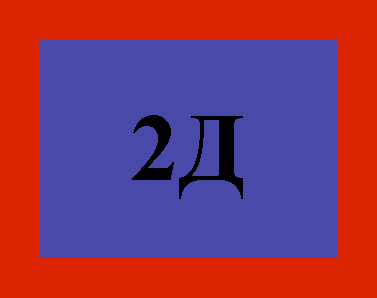
A Cossack Division flag would be similar, except dark blue with a red border, and there was an added letter to indicate which Host it was.
To the right is what the 2nd Don division would have been.
Regimental HQ Flags
Regiments had flags with diamonds inside a rectangle of solid colour of 120 cm by 80 cm.
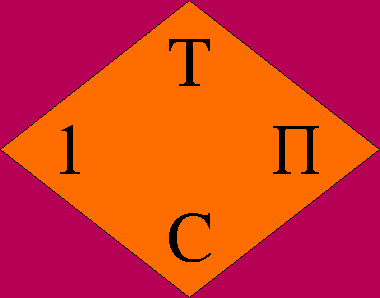 The diamond was orange for infantry, with a field of red (1st regiment in a division), blue (2nd), white (3rd), dark green (4th) or raspberry (rifle regiment).
The diamond was orange for infantry, with a field of red (1st regiment in a division), blue (2nd), white (3rd), dark green (4th) or raspberry (rifle regiment).
Cossacks had a red diamond on dark blue field.
Line cavalry had dark blue diamond on orange field.
Cavalry Regimental Command Flags
Since cavalry commanders needed to be in the front rank, and therefore not necessarily with the staff flag, the Imperial cavalry had a separate system of identifying the commander for cavalry units.
Cuirrasier regiments flew a swallow-tailed flag 66 cm long and 30 cm high with a system of coloured triangles. Other cavalry a similar flag but with a system of stripes.
Cossack cavalry had 90 cm square flags in Host colours, with a distinguishing St Andrews cross for the second Host of a shared colour, and the unit's number in the centre. Horse tails were often added.
Battalion and Company Flags
The battalions of the infantry carried small flags (70 cm by 40 cm) on the bayonet of one of the men. They were squares with two small wings and had three stripes in white, orange and black with the battalion's number in black Roman numerals in the centre. Guards units added Гв.Э, and units awarded a St George honour added extra details.
Companies had small flags (40 cm square with two small trangle wings), also carried on the bayonets. There was a complicated system of coloured crosses involving the type of the unit and its place in the division.
Squadron Flags
The Guards cavalry appear to have adopted squadron flags before WWI. Many are known, but they followed no pattern. Other regular cavalry had no pattern.
Cossack sotnias, on the other hand, had a well established system. On a swallow-tailed flag the top half was in Host colour and the bottom half designated the sotnia by a system of colours (in order: scarlet, light blue, white, dark green, yellow and brown). There was a white band in the upper half if the Host was the second of that colour
Separate squadrons and sotnias might have such a diamond-in-rectangle banner of 60 cm by 40 cm.
 Cossacks prior to WWI with the Sotnia flags clearly visible on the extreme right of the sotnia.
Cossacks prior to WWI with the Sotnia flags clearly visible on the extreme right of the sotnia.
Batteries
Some flags were flown, but there was no system. Most would be small, about 60 cm by 40 cm.